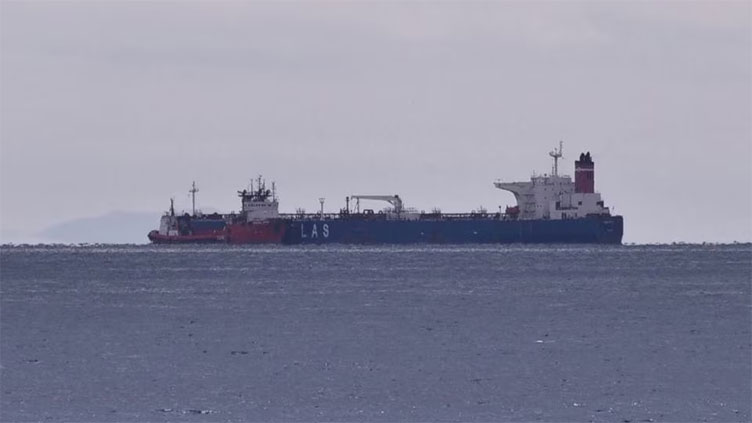Russian sanctions shift oil price-making power to Asia from Europe

World
Western sanctions have led Russia to sell more than twice as much crude to Asia in the year.
LONDON (Reuters) – Western sanctions on Russian and Iranian oil have channelled cheap fuel to Asia and in the process eroded a decades-long trend whereby the continent has paid more for energy than Europe, according to traders, analysts and Refinitiv Eikon data.
Analysts and government officials from consumer countries use the term Asian premium to refer to the higher prices Asian importers have paid for oil sold by big exporters, such as members of the Organisation of the Petroleum Exporting Countries (OPEC).
For Asia, a weakened premium amounts to an economic stimulus, highlighting another unintended consequence of the Western sanctions on oil and gas exporter Moscow, which also led to a surge in the amount Europeans have paid for natural gas.
"It's safe to say that some major consumers in Asia, most notably India and China, are the major winners of the sanctions," Ole Hansen, head of commodity strategy at Saxo Bank, said.
Western sanctions have led Russia to sell more than twice as much crude to Asia in the year to January, according to Kpler data. Iran, under US sanctions, has boosted exports to the highest in three years on some estimates, with China the biggest buyer.
Russia's flagship export blend Urals, which before the Ukraine invasion was sold in Europe at a few dollars a barrel below the value of benchmark dated Brent, is being sold in Asia at a discount of minus $24, according to Refinitiv Eikon data. Some industry sources, asking not to be named, say the discount is narrower at $10-$15 per barrel.
Even at a discount of around $15 per barrel, a refinery in India processing 200,000 barrels per day would save $3 million a day on its crude purchases compared to a European rival. On an annual basis the saving would exceed $1 billion.
Hardeep Singh Puri, India's oil minister, said in early February the country will keep buying from Russia if prices "continue to be good".
PRICE-TAKERS AND MAKERS
The Asian premium dates back to when producer countries began issuing marker prices for their crude in the 1980s, and they could be higher for buyers in Asia, who were more dependent on imports, making them price-takers.
Asian buyers have made previous attempts to erode the premium, investing in refining capacity to boost their demand and improve their negotiating power.
Saudi Arabia and other leading exporters have reflected the current shifts in significantly lower official selling prices (OSPs) expressed as differentials to regional benchmarks.
In the three months to February, Saudi Arabia reduced prices for its flagship Arab Light for Asian buyers - although it has increased the prices for April- and March-loading crude.
Even so, since November, Saudi Arabia has lowered the differential for Arab Light sold in Asia by $3.35 a barrel. The differential for sales to Europe basis Ras Tanura has been increased over the same period by 10 cents a barrel.
Other big OPEC exporters Iraq and Kuwait have also reduced their OSPs to Asia since November. Iraq, the only one of the two which also issues prices for Europe, has cut the differentials for Basrah Medium and Heavy to Asia, and increased them to Europe.
"Iran and now Russia increasingly compete on price and the other Middle East producers must adjust their prices accordingly - the result being relatively higher selling prices to Europe," Saxo Bank's Hansen said.
EUROPE LOSES SUPPLY SOURCE
India was among those to have complained about the Asian premium they paid to the big exporters.
"The Asians used to have less options than the rest of the world as their pricing needed to attract long-haul exports," said Jorge Montepeque, who during decades working at S&P Global Platts, developed the dated Brent pricing benchmark. "So by definition the Asians had to pay up, while Europe and America had indigenous supplies."
Now, with Europe losing Russian crude as a source of supply, the continent needs to draw oil from further afield and "in theory, the Middle East pricing becomes worse for the Europeans," he said.
The outright price of Arab Light crude, according to an approximation based on Refinitiv data, in Europe moved closer to parity and sometimes exceeded that for Asia in 2023.
In 2021 and early 2022, the price in Asia was mostly at a premium, as shown by the chart below.
'NO FREE MARKET'
Neil Atkinson, an independent analyst and former senior International Energy Agency official, said the drop in Russia's Western shipments and its discounted Indian sales were making the Asian premium redundant.
"These normal sorts of patterns of Asian premium or discount don't really apply," he said. "The circumstances are so extraordinary. We don't have essentially the free market that we would have in normal times."
In another example of firmer European crude markets, Norwegian Johan Sverdrup crude on Feb. 16 was offered at a premium to dated Brent, up from a $5.15 discount in late November. It is unclear whether it found a buyer.
Sverdrup, from Europe's largest producing oilfield, made its market debut in 2020. Initially, most shipments went to Asia.
After the imposition of sanctions on Russia following its invasion of Ukraine begun in February last year, most of the shipments of Sverdrup remain in Europe and have replaced Russian Urals for many refiners.
Not all see Europe paying elevated prices for the longer term as other suppliers, from which Asia is buying less fill the gap - and an end to the Ukraine war could restore the flow of Russian crude.
"Once the war is over, I believe some normality will return and eventually sanctions will be lifted allowing Russia to compete on equal terms for customers," Saxo Bank's Hansen said.


